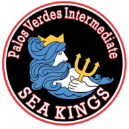Science 6
Course Description
180 days= 22.5 days or 4.5 weeks per chapter
1. Nature of Science- 4 wks
1.1. Nature of Science
1.2. Basic and Applied Science
1.3. Scientific Ways of Thinking
1.4. Scientific Explanations and Interpretations
1.5. Science and Engineering Practices
1.6. Development of Hypotheses
1.7. Testing Hypotheses
1.8. Scientific Induction
1.9. Correlation and Causation
1.10. Observations and Experiments
1.11. Scientific Measuring Devices
1.12. Accuracy and Precision
1.13. Scientific Graphing
1.14. Scientific Theory
1.15. Development of Theories
1.16. Scientific Law
1.17. Scientific Modeling
1.18. Scientific Models
1.19. Scientific Community
1.20. Safety in the Life Sciences
1.21. Safety in Science
1.22. Ethics in Science
2. Heat and Energy- 5 wks
2.1. Energy
2.2. Forms of Energy
2.3. Average Kinetic Energy
2.4. Kinetic Theory of Matter
2.5. Changes of State
2.6. Heat
2.7. Temperature
2.8. Heat Conduction
2.9. Thermal Conductors and Insulators
2.10. Specific Heat
2.11. Convection
2.12. Density
2.13. Thermal Radiation
2.14. Light
3. Weather- 5 wks
3.1. Solar Energy on Earth
3.2. Distribution of Water on Earth
3.3. Water Distribution
3.4. Processes of the Water Cycle
3.5. Clouds
3.6. Precipitation
3.7. Importance of the Atmosphere
3.8. Composition of the Atmosphere
3.9. Pressure and Density of the Atmosphere
3.10. Air Pressure and Altitude
3.11. Electromagnetic Energy in the Atmosphere
3.12. Temperature and Heat in the Atmosphere
3.13. Collecting Weather Data
3.14. Air Masses
3.15. Weather Fronts
3.16. Weather Maps
3.17. Predicting Weather
3.18. Seasons
4. Climate- 5 wks
4.1. Weather versus Climate
4.2. Climate Change in Earth History
4.3. Short-Term Climate Change
4.4. Long-Term Climate Change
4.5. Effect of Latitude on Climate
4.6. Coriolis Effect
4.7. How Ocean Currents Moderate Climate
4.8. Deep Ocean Currents
4.9. Effect of Continental Position on Climate
4.10. Global Warming
4.11. Causes and Effects of Global Warming
4.12. Air Quality
4.13. Types of Air Pollution
4.14. Carbon Cycle and Climate
4.15. Effects of Air Pollution on Human Health
4.16. Effects of Air Pollution on the Environment
4.17. Reducing Greenhouse Gas Pollution
4.18. Reducing Ozone Destruction
5. Cells- 4 wks
5.1. Characteristics of Life
5.2. Viruses
5.3. Cell Biology
5.4. Microscopes
5.5. Prokaryotic and Eukaryotic Cells
5.6. Plant Cell Structures
5.7. Cell Membrane
5.8. Cell Transport
5.9. Passive Transport
5.10. Diffusion
5.11. Active Transport
5.12. Cell Nucleus
5.13. Organelles
5.14. Cell Cycle
5.15. Cell Division
6.1. Organization of the Human Body
6.2. Smooth, Skeletal, and Cardiac Muscles
6.3. Muscles, Bones, and Movement
6.4. Muscles and Exercise
6.5. Cardiovascular System
6.6. Heart
6.7. Blood Vessels
6.8. Components of Blood
6.9. Respiration
6.10. Respiratory System Organs
6.11. Processes of Breathing
6.12. Human Digestive System
6.13. Digestive System Organs
6.14. Food and Nutrients
6.15. Excretion
6.16. Urinary System
6.17. Kidneys
6.18. Diabetes
7. Reproduction & Genetics- 4 wks
7.1.Mitosis and Cytokinesis
7.2. Meiosis
7.3. Mitosis vs. Meiosis
7.4. Asexual vs. Sexual Reproduction
7.5. Mendel's Pea Plants
7.6. Mendel's Laws and Genetics
7.7. Non-Mendelian Inheritance
7.8. Sex-linked Inheritance
7.9. Plant Reproduction and Life Cycle
7.10. Vascular Seedless Plants
7.11. Nonvascular Plants
7.12. Reproduction in Seedless Plants
7.13. Gymnosperms
7.14. Seeds and Seed Dispersal
7.15. Angiosperms
7.16. Tropisms
7.17. Reproductive Behavior of Animals
7.18. Bird Reproduction
7.19. Mammal Reproduction
8. Sensory Responses- 4 wks
8.1. Nervous System
8.2. Nerve Cells and Nerve Impulses
8.3. Central Nervous System
8.4. Peripheral Nervous System
8.5. Touch
8.6. Taste and Smell
8.7. Hearing and Balance
8.8. Human Vision
8.9. How the Eye Works
Posts
11/6 - 11/10
10/30 - 11/3


10/16 - 10/20
10/9 - 10/13
10/4 Quiz Vocabulary
10/2 - 10/6
9/25 - 9/29
Study Guide for 9/22 Test
First Test (9/22) Study Guide
Think Like a Scientist
(For each of the following, state why it is important for a scientist and give an example.)
Curiosity
Skepticism
Openness to New Ideas
Imagination and Creativity
Intellectual Honesty
Ethical Responsibility
Experimenting
Predicting what and stating why is what makes a hypothesis more than a guess.
Graphing
(You should be able to choose the appropriate type of graph for a set of data and create that graph with all the required parts.)
Graphs and Data Tables
Data Tables- Organize Data
Graphs- Help you visualize the data
-Bar Graph, for comparison
-Line Graph, for change over time
-Pie Chart, for showing parts of a whole
Graph Parts
-Title
-Label axis
-Label units
-Include key?
Safety (know the safety rules discussed so far)
Lab Safety
-Never mix food/ drink and lab materials (do not eat or drink lab materials, unless that is part of the lab)
-Water Safety
--Water Stays on the Trays
--Water on the Ground, Stand Around (Guard the Water)
Linear measurements
History of the Meter.
Originally 1/10,000,000 of the distance from the equator to the pole.
Metric Conversion
You should be able to convert from one metric unit to the other (12mm = __________ km)
(See KHDUDCM image above)
Caliper
(You should know how to use the caliper and will be asked to measure object on the test)
Calipers can make 4 different measurements.
-Outside Diameter
-Inside Diameter
-Off-set
-Depth
The zero on the moving jaw indicates the measurement.
"Mind the Gab" measure with the main part of the jaws, not the upper where the gap will through off your measurements.
SAFETY- watch the metal depth probe. When extended it is hard to see and could cause an injury. Never leave the probe extended.
Rate of Change
Interpret line graph.
-Straight sloped line shows constant rate of change
-Curved downward line shows increased rate of change
Curved toward horizontal shows a decreased rate of change.

